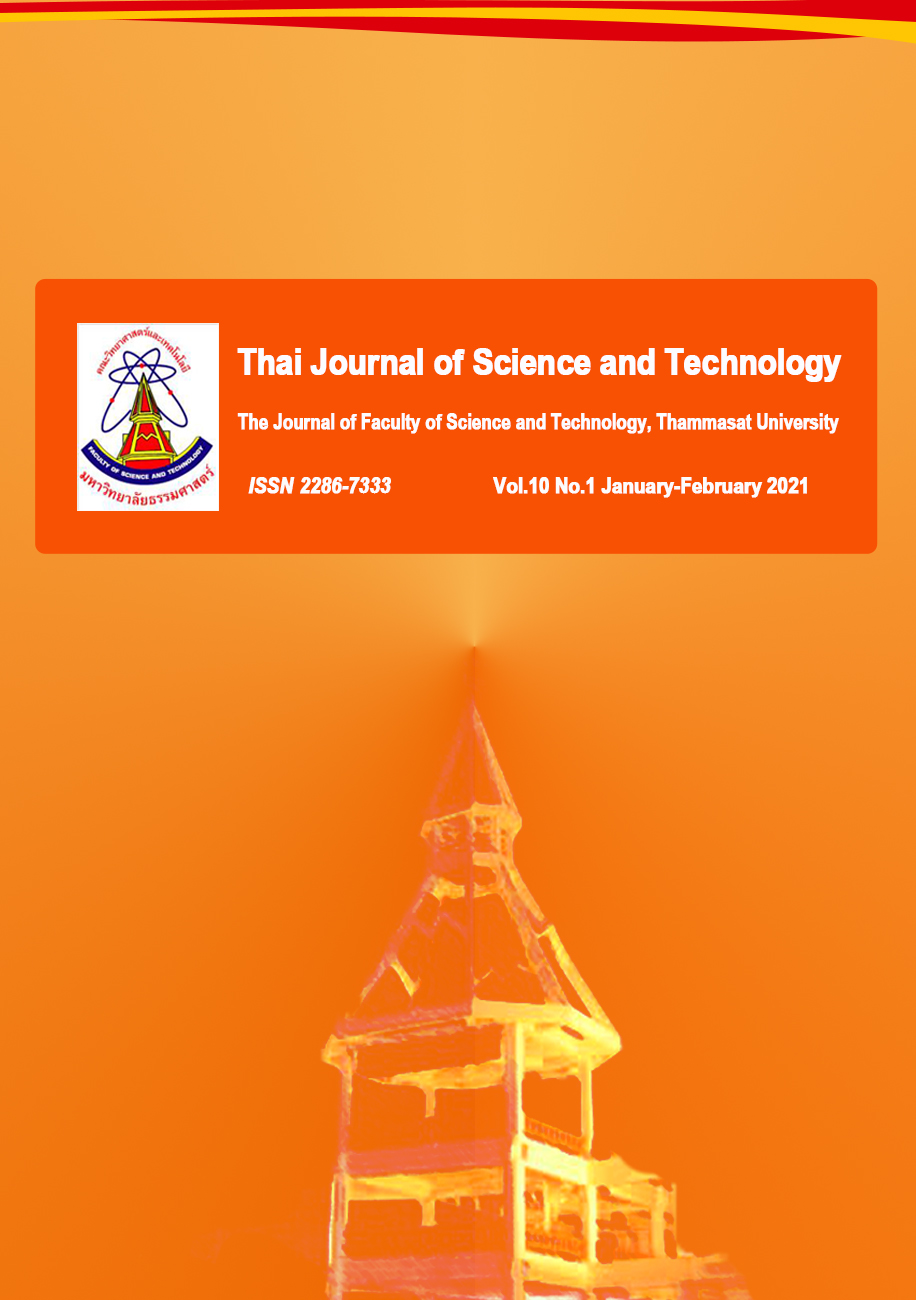Biofilm Formation and Hydrophobicity of Candida parapsilosis
Main Article Content
Abstract
Candida parapsilosis, a normal flora found on the human body, is recognized as an opportunistic pathogen in immunocompromised individuals, especially in the neonate. C. parapsilosis also can form a biofilm to protect cells from the external environment. Therefore, biofilm results in resistance to antimicrobial agents and host immunity, leading to a severe infection in the patients. Cell surface hydrophobicity (CSH) is one factor that affected biofilm formation. This research aimed to study biofilm formation using two different materials (polypropylene tube and borosilicate tube) and CSH using microbial adhesion to hydrocarbons (MATH) test in 66 C. parapsilosis clinical isolates. The results showed that biofilm formation in 66 isolates was strain-dependent, and biofilm was related to two different materials. Using MATH method, the hydrophobicity of the isolates was between 1.370 - 90.217%. However, the correlation between hydrophobicity and biofilm formation of all isolates was not shown in this study.
Article Details

This work is licensed under a Creative Commons Attribution-NonCommercial-NoDerivatives 4.0 International License.
บทความที่ได้รับการตีพิมพ์เป็นลิขสิทธิ์ของคณะวิทยาศาสตร์และเทคโนโลยี มหาวิทยาลัยธรรมศาสตร์ ข้อความที่ปรากฏในแต่ละเรื่องของวารสารเล่มนี้เป็นเพียงความเห็นส่วนตัวของผู้เขียน ไม่มีความเกี่ยวข้องกับคณะวิทยาศาสตร์และเทคโนโลยี หรือคณาจารย์ท่านอื่นในมหาวิทยาลัยธรรมศาสตร์ ผู้เขียนต้องยืนยันว่าความรับผิดชอบต่อทุกข้อความที่นำเสนอไว้ในบทความของตน หากมีข้อผิดพลาดหรือความไม่ถูกต้องใด ๆ


